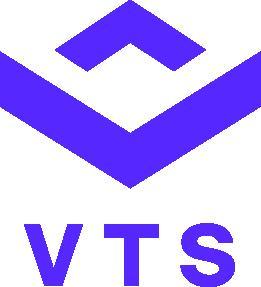Demand for Office Space Remains Paused at Two-Thirds of Normal as Employers Hold Off on Office Space Decisions
Demand for Office Space Remains Paused at Two-Thirds of Normal as Employers Hold Off on Office Space Decisions
Demand is slow primarily due to companies trying to get a better grasp of their long-term plans around remoted work, according to a VTS Office Demand Index (VODI) analysis
NEW YORK--(BUSINESS WIRE)--New demand for office space continued to plateau in May, maintaining gains made in March. This is the eighth consecutive month where demand for office space remained between half and two-thirds of the pre-pandemic normal rate of demand, according to the VTS Office Demand Index (VODI). The VODI tracks unique new tenant tour requirements, both in-person and virtual, of office properties in core U.S. markets, and is the earliest available indicator of upcoming office leasing activity as well as the only commercial real estate index to explicitly track new tenant demand.
“When an employer leases office space, they’re typically making a bet that they will need the space for the next five to ten years,” said Nick Romito, CEO of VTS. “So, given the uncertainty of how remote or hybrid will work out in the long run, many employers are pausing major leasing decisions until they know more about their long-term plans around remote work. We expect that if and when they decide to look for more space, they’ll be walking, not running into the market, as they navigate what the office means to them.”
Nationally, demand for office space increased from April to May by 2 VODI points (3.1%), from 65 to 67 and is up 21.8 percent quarter-over-quarter. However, the VODI is down 14.1 percent year-over-year, a reflection of a large, but temporary, surge of demand for office space a year ago, after the COVID-19 vaccines were approved for all adults.
On a local level, with the exception of New York City and Chicago, the core office markets saw little change from April to May. Currently at a nine-month high, demand for office space in New York City is now 80 percent of its pre-pandemic normal after increasing 13 percent from April to May. Demand in Chicago fell 14 percent month-over-month, nearly reversing the gains made a month earlier.
“What we are seeing on a national level–the stagnation driven by employers’ reluctance to make long-term office decisions–is even more evident locally. Markets like New York City, a city with lower rates of remote jobs and a strong culture of being in the office, we see fewer employers are sitting on the sidelines and demand is creeping closer back to normal,” said VTS Chief Strategy Officer Ryan Masiello. “But in cities like San Francisco where we are seeing demand at just 44 percent of normal and where remote-friendly tech jobs dominate the landscape, the pause is significant and potentially a view into the future for office demand there long-term.”
With occasional month-to-month exceptions, core office markets with higher rates of remote-friendly jobs are further from their pre-pandemic normal than those with fewer remote-friendly jobs. As of May, the gap between the average remote-friendly and less-remote-friendly VODIs was 22.2 percent.
VTS Office Demand Index (VODI) |
||||||||
|
|
Remote Work-Friendly |
Less Remote Work-Friendly |
|||||
National |
S.F. |
BOS |
SEA |
D.C. |
N.Y.C. |
CHI |
L.A. |
|
Current VODI (May) |
67 |
44 |
60 |
63 |
58 |
80 |
63 |
74 |
Month-over-Month VODI Change (%) |
3.1% |
2.3% |
3.4% |
8.6% |
-1.7% |
12.7% |
-13.7% |
-1.3% |
Month-over-Month VODI Change (pts.) |
+2 |
+1 |
+2 |
+5 |
-1 |
+9 |
-10 |
-1 |
Quarter-over-Quarter VODI Change (%) |
21.8% |
46.7% |
50% |
-10% |
-3.3% |
31.1% |
12.5% |
4.2% |
Quarter-over-Quarter VODI Change (pts.) |
+12 |
+14 |
+20 |
-7 |
-2 |
+19 |
+7 |
+3 |
Year-over-Year VODI Change (%) |
-14.1% |
-31.3% |
+1.7% |
-8.7% |
-38.9% |
-3.6% |
-18.2% |
-15.9% |
Year-over-Year VODI Change (pts.) |
-11 |
-20 |
+1 |
-6 |
-37 |
-3 |
-14 |
-14 |
ABOUT VTS
VTS is the commercial real estate industry’s leading technology platform that transforms how strategic decisions are made and executed across the asset lifecycle. In 2013, VTS revolutionized the commercial real estate industry’s leasing operations with what is now VTS Lease. Today, the VTS Platform is the largest first-party data source in the industry and delivers data insights and solutions for everyone in commercial real estate to fuel their investment and asset strategy, leasing and marketing automation, property operations, and tenant experience.
With the VTS Platform, consisting of VTS Data, VTS Market, VTS Rise, and VTS Lease, every business stakeholder in commercial real estate is given the real-time market information and executional capabilities to do their job with unparalleled speed and intelligence. VTS is the global leader with more than 60% of Class A office space in the U.S., and 12 billion square feet of office, retail, and industrial space is managed through our platform globally. VTS’ user base includes over 45,000 CRE professionals and industry-leading customers such as Blackstone, Brookfield Properties, LaSalle Investment Management, Hines, Boston Properties, Oxford Properties, JLL, and CBRE. To learn more about VTS, and to see our open roles, visit www.vts.com.
Contacts
Media:
Eric Johnson
VTS
eric.johnson@vts.com
Alison Paoli
Kingston Marketing Group
alison@kingstonmarketing.group
Elise Szwajkowski
Marino
eszwajkowski@marinopr.com
